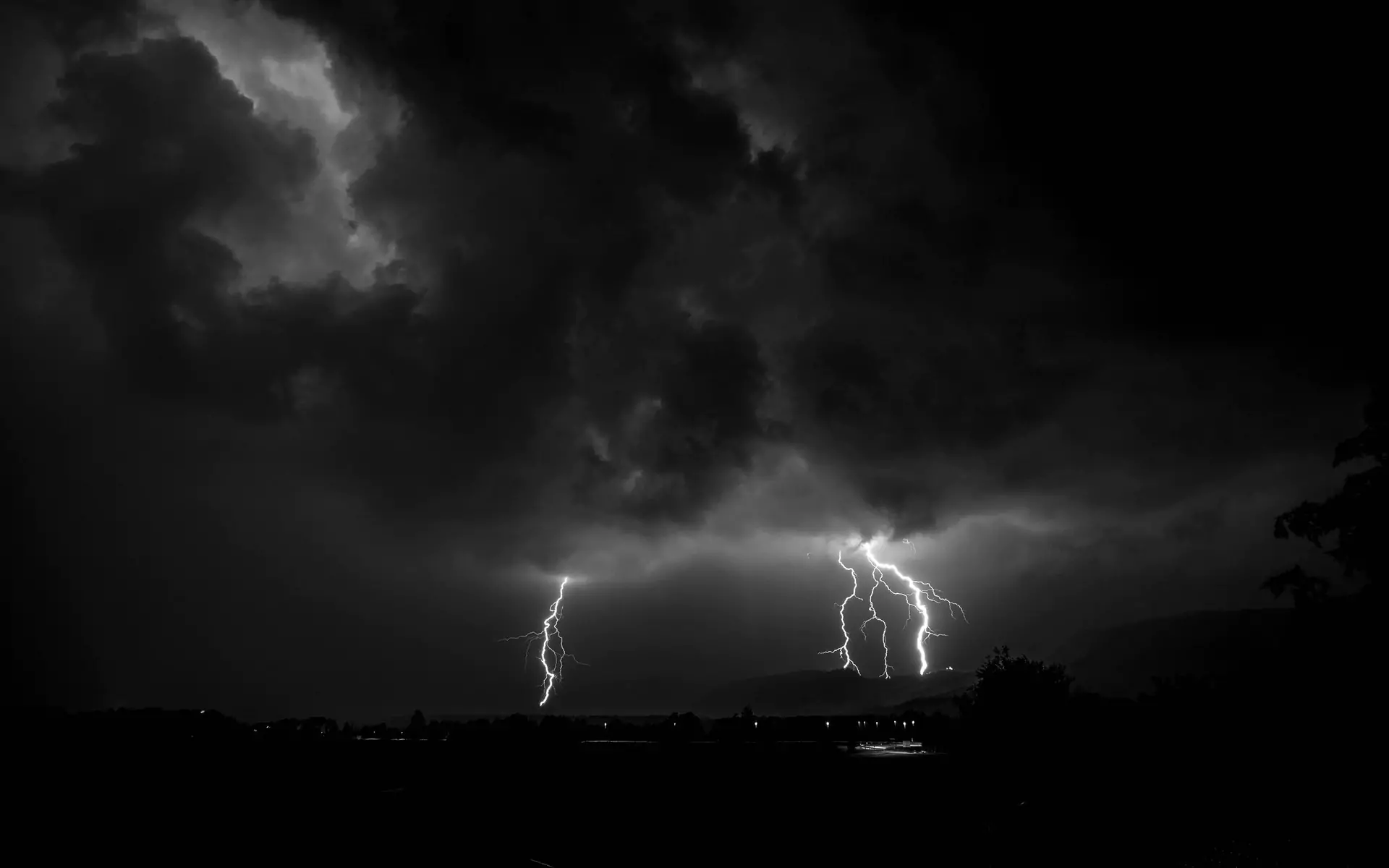Lighting is the powerful result produced by the buildup of opposite electrical charges in a thunderstorm. The electrical discharge emits bright visible light and the electrical current heats the air and expands it into plasma, producing the acoustic shock waves that we hear as thunder.
Exactly how opposite charges build up in the thunderstorm is still not fully known. The most widely accepted theory begins with the polarization of the precipitation inside the cloud. Ice crystals and raindrops take on electrical charges as the move through the Earth's electrical field. These negatively and positively charged droplets and crystals tend to separate, with the positively charged crystals tending to rise to the top. This gives the top of the cloud a positive charge, while negatively charged crystals and hailstones tend to build up a negative charge in the bottom of the cloud.
Opposing electrical charges are strongly attracted but insulated by the air between them. Once the charge builds sufficient strength, an electrical discharge may occur within the cloud, between clouds, and from cloud to ground. However, only about one in 4 lightning bolts strikes the ground. Lightning bolts travel quickly--about 60,000 miles per second.
Most lightning (about 95 percent) is negative lightning. This is because it is discharging the negative charge from the cloud. However, about five percent of lightning is positive lightning, traveling from the positively charged cloud tops to negatively charged ground. Discovered only in the 1970s, positive lightning is 6 to ten times more powerful than negative lightning. It represents a much greater threat to man and technology.
Thunder is produced when the air almost a lightning bolt is superheated, causing it to expand and then contract rapidly. Sound travels more slowly than light, so its possible to estimate how far distant lightning strikes are my counting the seconds between seeing the lightning and hearing the thunder. Sound takes about five seconds to travel one mile. Thunder more than 20 miles away is usually inaudible.
